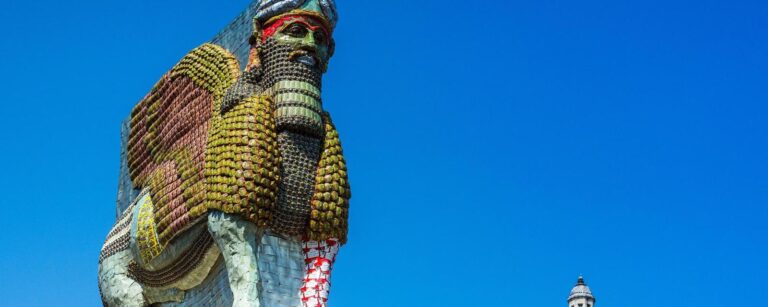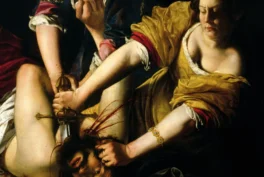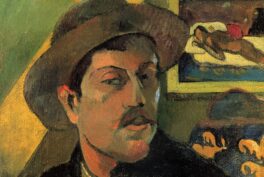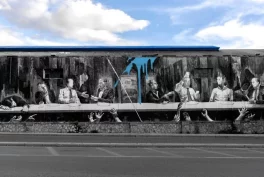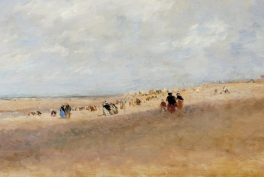In March 2020 the Fourth plinth in Trafalgar Square in London, which since 1998 temporarily hosts sculptures and installations by contemporary artists, will no longer be guarded by the 700 BC sculpture which once stood at the gates of the city of Nineveh (Mosul, Iraq). Well, actually, it is not the original piece but just a recreation by American Michael Rakowitz who, since 2006, has been recreating world heritage pieces that have been lost forever.
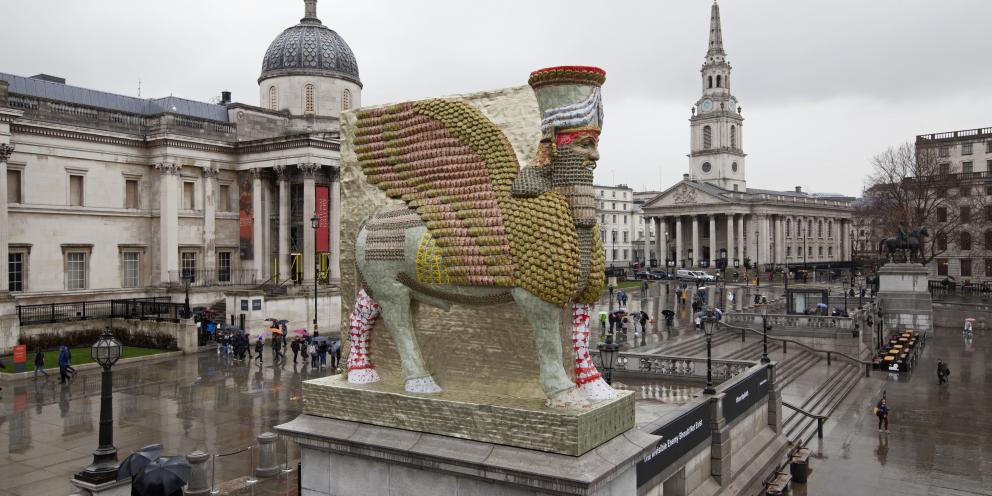
Lamassu, a Sumerian protective deity in the shape of a winged bull with a human head, had been guarding the entrance to the Nergal Gate until it was destroyed by Daesh in 2015. It is one of the 15,000 destroyed or looted artifacts that Rakowitz’s project The Invisible Enemy Should Not Exist tries to preserve for future generations. Originated from Iraq, Rakowitz has tried to shed light on Iraqi heritage lost during the Iraqi War, whether stolen from the National Museum of Iraq, Baghdad, in the aftermath of the US invasion of April 2003, or later destroyed in bombings. Nevertheless, his project makes the viewers reflect on how much a national treasure is actually the heritage of entire humanity.
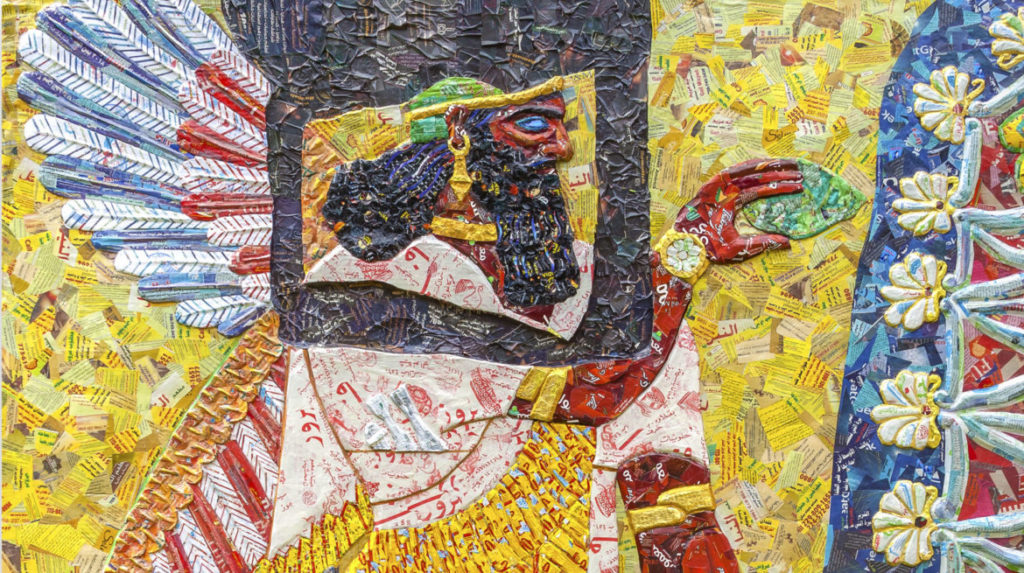
Rakowitz referred to the artifacts’ sudden disappearance and subsequent invisibility by using in their construction short-lived materials, such as recycled packaging which reached the United States from the Middle East (Moroccan tinned sardines in tomato sauce, Maggi halal chicken soup, the Al-Kbous Tea). The Lamassu for example, is made of 10,500 empty Iraqi date syrup cans, while other works are even made of local Arabic newspapers, representing the ephemeral cultural visibility of Iraq in the American media and the economic disaster that war and boycotts caused in Iraqi food industry, the hitherto second most profitable source of export besides oil prior to the war.
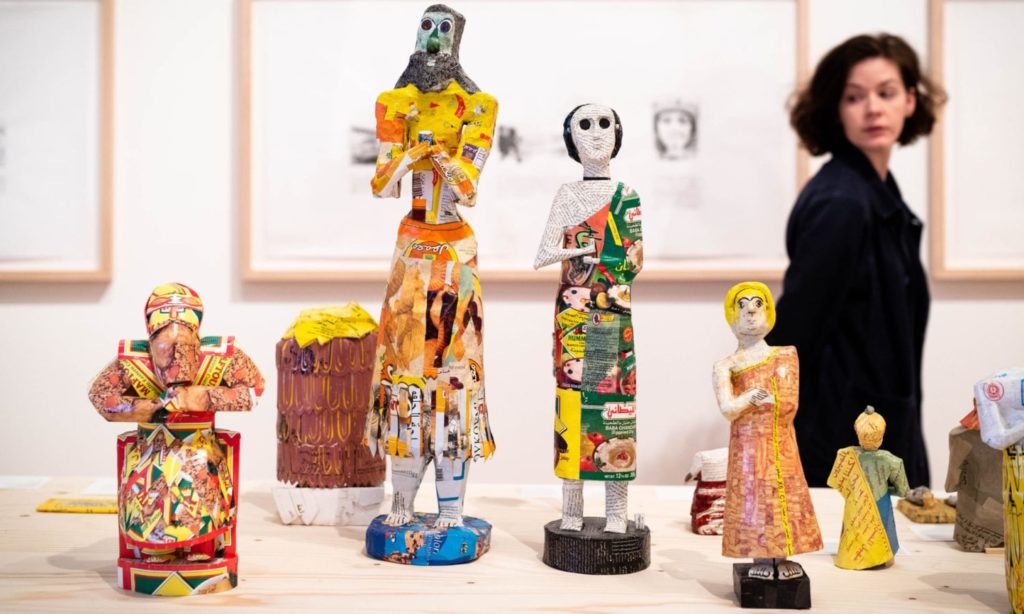
The title of the project is not accidental either, as it refers to the direct translation of Aj-ibur-shapu, the ancient Babylonian processional way that ran through the Ishtar Gate (built c. 575 BCE by King Nebuchadnezzar II). In 1902-14 the fragments of the Gate were excavated by German archeologist Robert Koldewey and then transported from Iraq to Berlin, where in 1930 they were put on permanent exhibition at the Pergamon Museum. By using the name of the processional way, Rakowitz reiterates the importance of raising awareness about how and why the heritage of one culture ends up in a museum so detached from its original environment, and whether once stolen pieces should be returned to their home. Interestingly enough, the Iraqi government rebuilt the gate in the 1950s, while years later Saddam Hussein reconstructed the entire city of Babylon to use it as a monument to his own sovereignty.
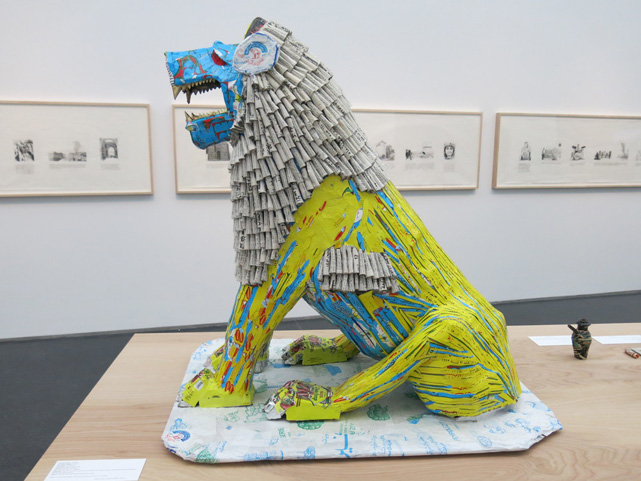
Rakowitz calls his objects “ghosts or apparitions” since the whereabouts of many of their originals are unknown. Others are lost forever.
